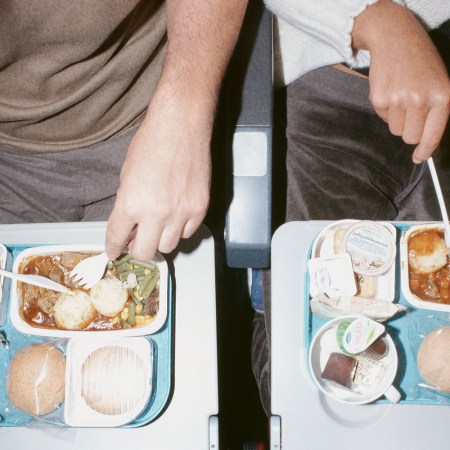Between 2018 and 2021, more than 15,000 wheelchairs were lost or damaged by the largest airlines in the U.S.
While that’s a startling statistic, it’s not exactly a surprise. The travel industry — and specifically the airline industry — has a long reputation of being especially unkind where disabled travelers are involved. In the most recent Monthly Air Travel Consumer Report from the U.S. Department of Transformation, almost 900 wheelchairs and scooters were mishandled this April alone. Just last week a disabled TikToker went viral after alleging that the TSA had snapped her cane in half.
“As most of you in the disabled community know, our wheelchairs and canes are broken by the hundreds every single day,” Lyn Ventimiglia notes in the video. “This is something that the TSA needs to stop.”
“You’re essentially breaking our legs, breaking our arms,” she later adds.
Stories like Ventimiglia’s are frustratingly common. In another TikTok, which was posted last summer and has since garnered nearly 18 million views, a passenger can be seen crying on the airbridge after her wheelchair was damaged by Delta airline employees.
Of course, there are the hundreds of incidents that don’t make it to TikTok, too. In fact, just a few days ago, a new report from The Guardian detailed an incident in which a passenger with severe spinal cord damage and nerve pain was left stranded on an airbridge at Sydney airport in Australia after it came to light that there were no wheelchairs available for him.
Fortunately, according to USA Today, Transportation Secretary Pete Buttigieg has announced a new initiative that, if successful, will ensure a better experience for disabled flyers. In addition to urging airlines to prioritize seating families together, Buttigieg has also introduced a new “bill of rights” for disabled passengers which is, in effect, a summarization of current laws. These rights include:
- The right to be treated with dignity and respect — a summary of anti-discrimination protections that cover air passengers.
- The right to receive information about services and aircraft capabilities and limitations — a requirement for airlines to provide accessibility information about their aircraft to disabled travelers.
- The right to receive information in an accessible format — a requirement that airline websites be accessible and that accommodations be made in the airport for hearing and visually impaired travelers.
- The right to accessible airport facilities — a requirement for airports and airplanes to be physically navigable for disabled travelers.
- The right to assistance at airports — a requirement that travelers receive help getting on and off the plane, and to and from the gate as needed.
- The right to assistance on the aircraft — a requirement for airlines to allow pre-boarding for passengers who need extra time, and help getting to and from their seat if needed.
- The right to travel with an assistive device or service animal — the requirement for these animals or devices to be accommodated onboard.
- The right to receive seating accommodations — these can include a moveable armrest to ease access for wheelchair users, bulkhead seating to accommodate service animals or an adjoining seat for an assistant.
- The right to accessible aircraft features — these include priority stowage for wheelchairs on larger aircraft, and at least one accessible bathroom on most planes in passenger service.
- The right to resolution of a disability-related issue — a requirement that airlines make complaint resolution officials available at the passenger’s request.
It bears mentioning that this new bill of rights is not a radical change. It is a streamlined way of communicating current rights, and moreover, the right to be treated with dignity and respect is hardly a decree that should require reiterating in 2022, but here we are. That said, consumer complaints against airlines are up 300% over pre-pandemic levels so — in theory — we can really only go up from here.
Thanks for reading InsideHook. Sign up for our daily newsletter and be in the know.


















